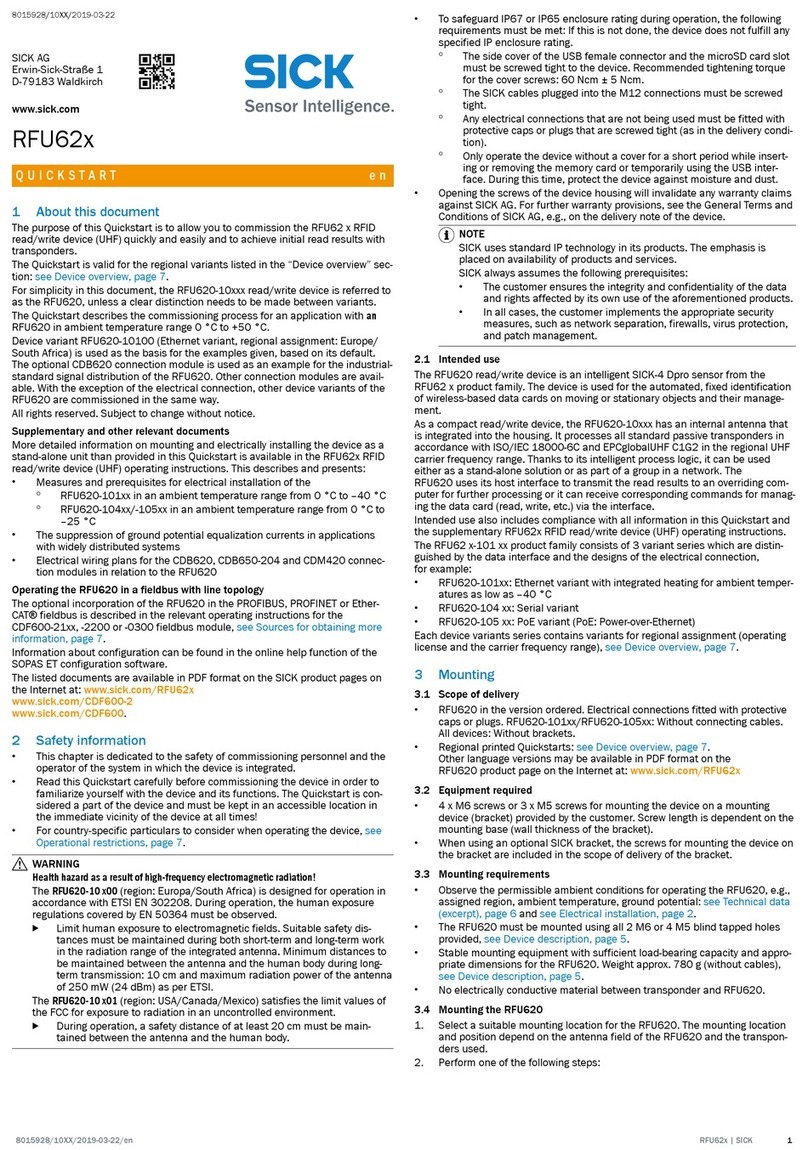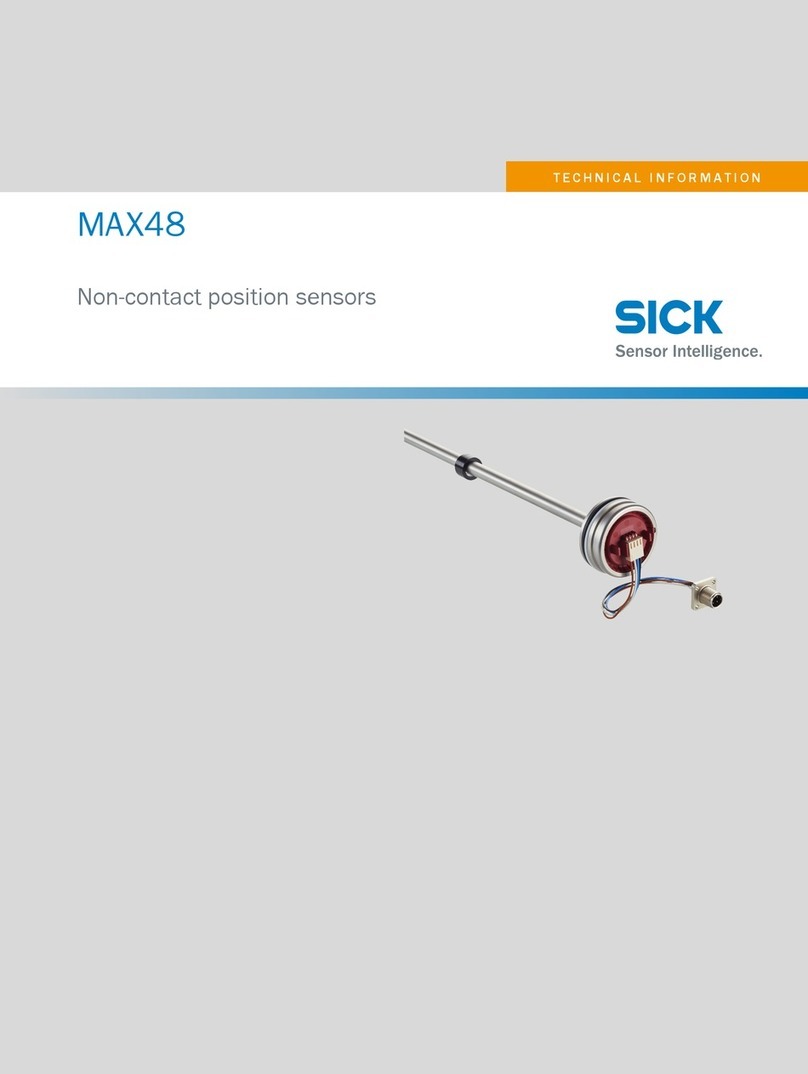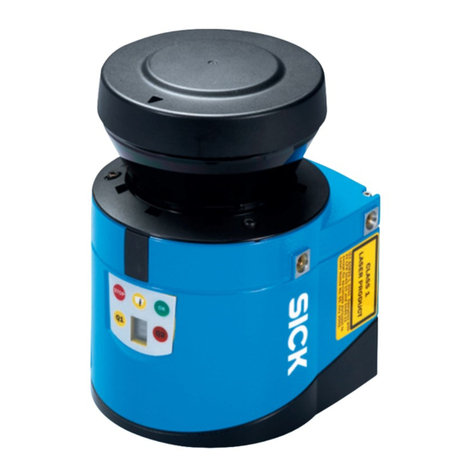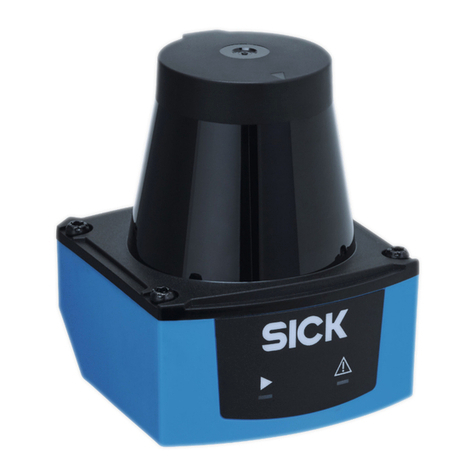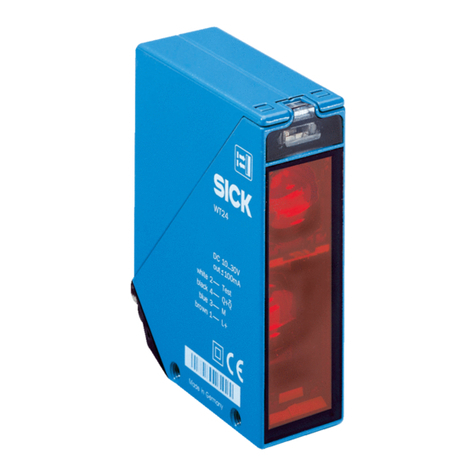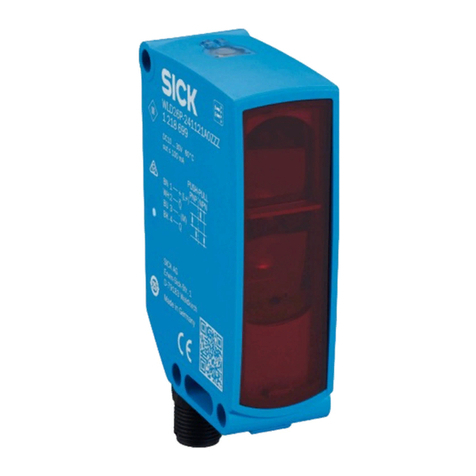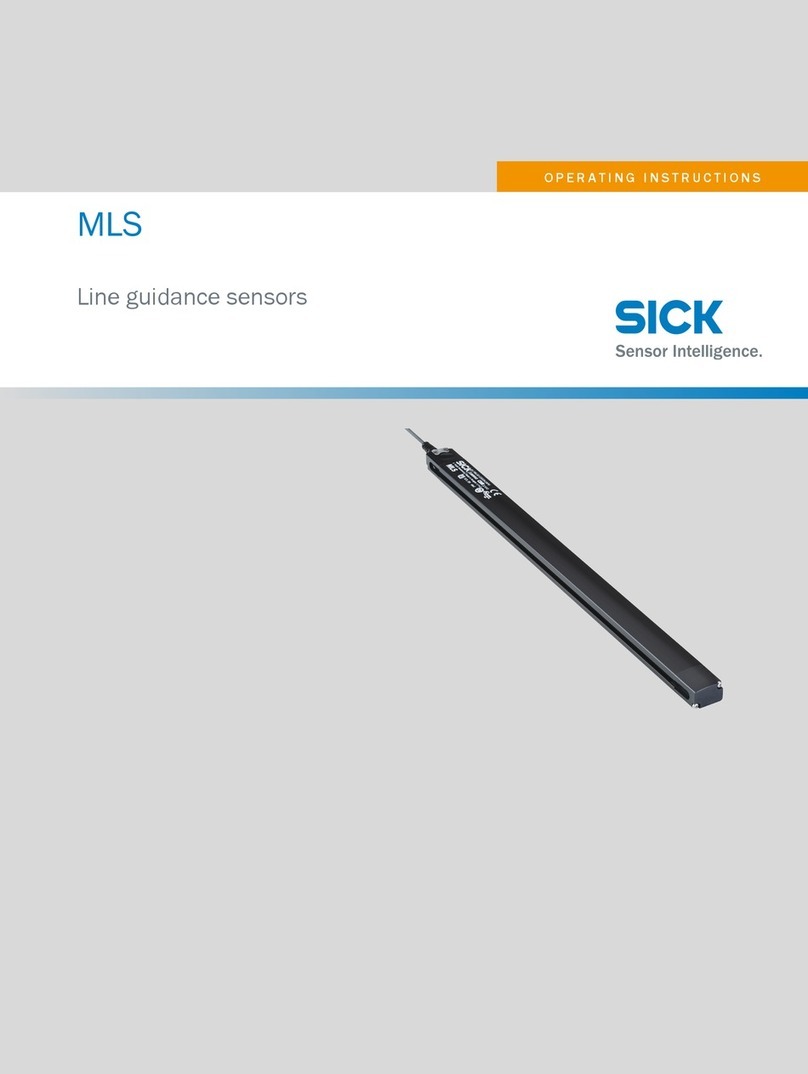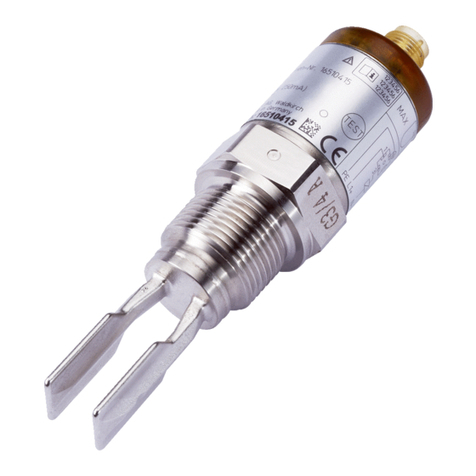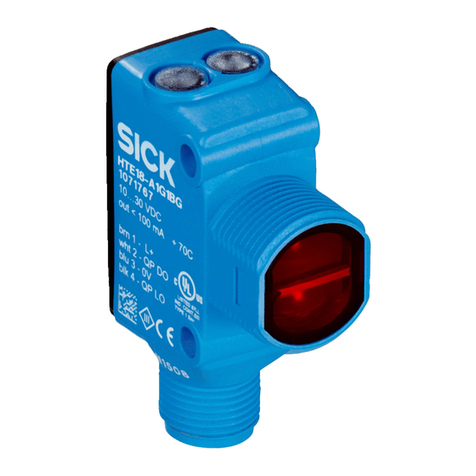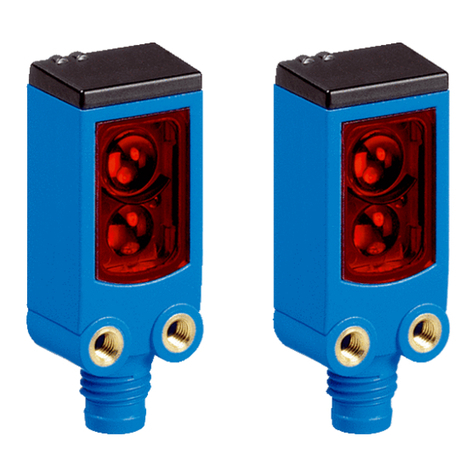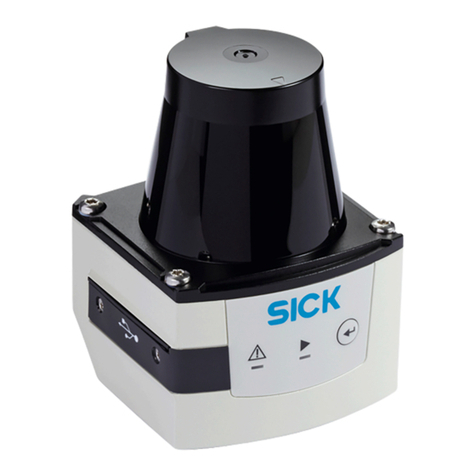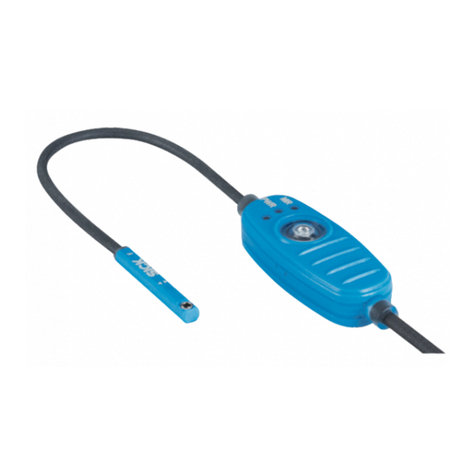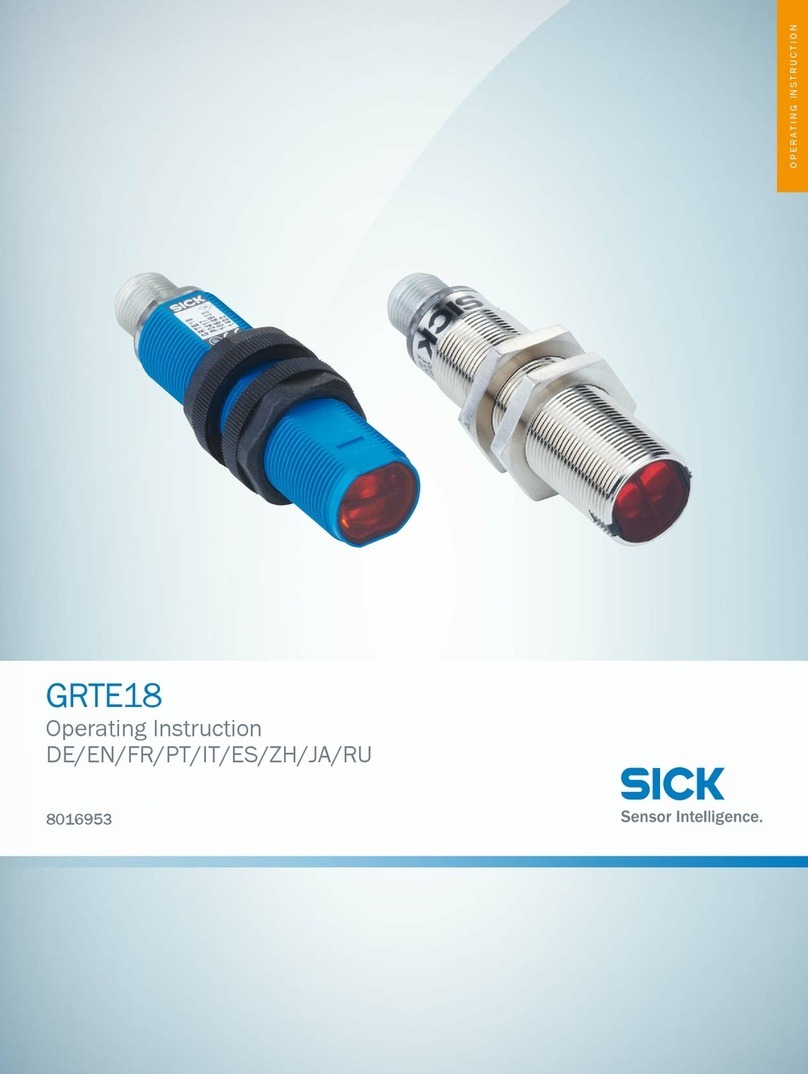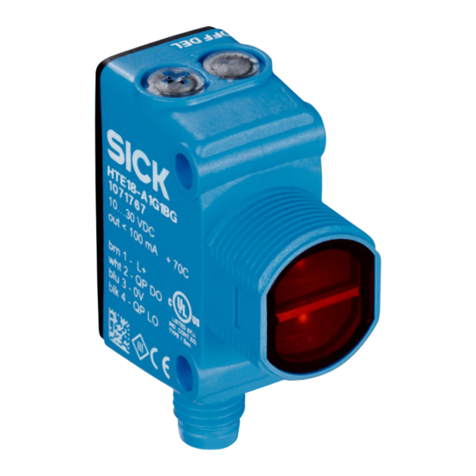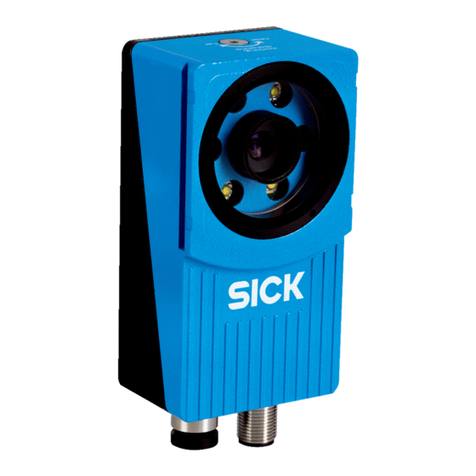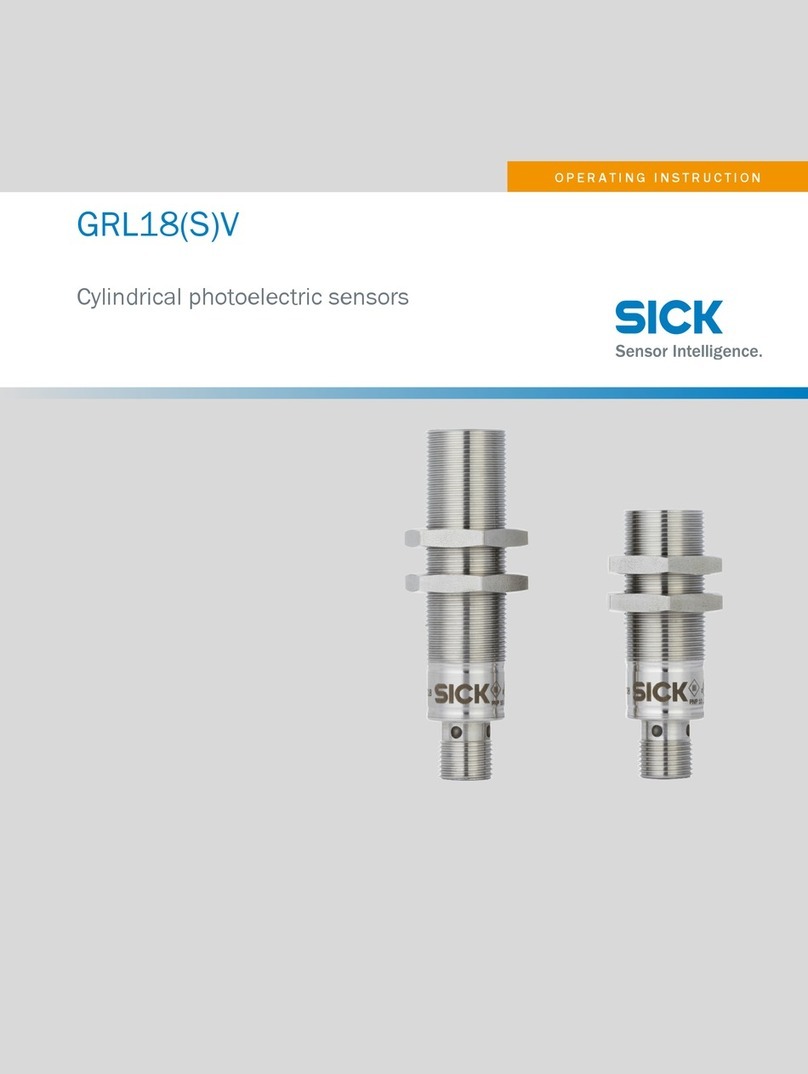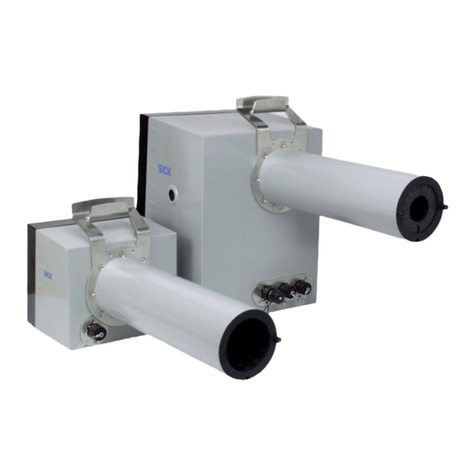
7 Table Fault diagnosis
LED indicator/fault pattern /
LED indicator/fault pattern
Cause /
Cause
Measures /
Measures
Green LED does not light up /
Green LED does not light up
No voltage or voltage below
the limit values /
No voltage or voltage below
the limit values
Check the power supply,
check all electrical connecti‐
ons (cables and plug connecti‐
ons) /
Check the power supply,
check all electrical connecti‐
ons (cables and plug connecti‐
ons)
Green LED does not light up /
Green LED does not light up
Voltage interruptions /
Voltage interruptions
Ensure there is a stable power
supply without interruptions /
Ensure there is a stable power
supply without interruptions
Green LED does not light up /
Green LED does not light up
Sensor is faulty /
Sensor is faulty
If the power supply is OK, re‐
place the sensor /
If the power supply is OK, re‐
place the sensor
Yellow LED flashes; if Health is
present then take note of the
corresponding output signal; if
Alarm is present then take note
of the corresponding output
signal /
Yellow LED flashes; if Health is
present then take note of the
corresponding output signal; if
Alarm is present then take note
of the corresponding output
signal
Sensor is still ready for opera‐
tion, but the operating conditi‐
ons are not ideal/additionally
with health output: power sup‐
ply interrupted /
Sensor is still ready for opera‐
tion, but the operating conditi‐
ons are not ideal/additionally
with health output: power sup‐
ply interrupted
Check the operating conditi‐
ons: Fully align the beam of
light (light spot) with the re‐
flector. / Clean the optical sur‐
faces (sensor and reflector). /
Readjust the sensitivity (po‐
tentiometer) / If the potentio‐
meter is set to the max. sen‐
sing range: Reduce the dis‐
tance between the sensor and
the reflector, and check the re‐
flector type against graphic
H. / Reflector is not suitable
for the application in question
(we recommend only using
SICK reflectors) / Check sen‐
sing range and adjust if ne‐
cessary; see graphic H. / Dis‐
tance between the sensor and
the reflector is too long / With
health output: Check the
power supply, check all electri‐
cal connections (cables and
plug connections). /
Check the operating conditi‐
ons: Fully align the beam of
light (light spot) with the re‐
flector. / Clean the optical sur‐
faces (sensor and reflector). /
Readjust the sensitivity (po‐
tentiometer) / If the potentio‐
meter is set to the max. sen‐
sing range: Reduce the dis‐
tance between the sensor and
the reflector, and check the re‐
flector type against graphic
H. / Reflector is not suitable
for the application in question
(we recommend only using
TABLE FAULT DIAGNOSIS 7
8017290 | SICK
Subject to change without notice 5
